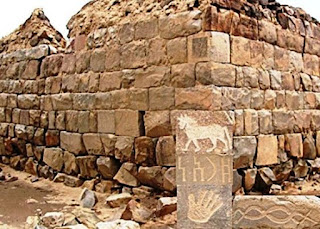The Geological Significance of Egyptian Stone
Egyptian stone, including marble and granite, has long been renowned for its exceptional quality, durability, and aesthetic appeal. Behind the allure of these stones lies a fascinating geological story. In this article, we will explore the geological significance of Egyptian stone, delving into the unique formations and factors that contribute to its exceptional quality.
Ancient Origins and Geological Formations:
The geological history of Egypt spans millions of years and has played a crucial role in the formation of its diverse stone deposits. Ancient marine sediments, including limestone, sandstone, and shale, were deposited during periods of marine transgressions and regressions. Over time, these sediments were subjected to immense pressure and heat, resulting in the transformation of sedimentary rocks into metamorphic rocks such as marble.
Egyptian Marble: From Limestone to Elegance:
Egyptian marble owes its existence to the transformation of limestone, a sedimentary rock composed primarily of calcite. The intense heat and pressure from tectonic processes led to the recrystallization of limestone, resulting in the formation of marble. This process gave rise to the exquisite beauty, distinct veining patterns, and remarkable durability that characterize Egyptian marble.
Egyptian Granite: Formed by Volcanic Activity:
Egyptian granite has a different geological origin compared to marble. It is an igneous rock formed from the solidification of molten magma deep within the Earth's crust. The presence of granite in Egypt can be attributed to ancient volcanic activity, where magma intrusions cooled and solidified over millions of years. Egyptian granite's exceptional strength, durability, and unique color variations make it a sought-after material for architectural and design applications.
Factors Contributing to Quality:
Several factors contribute to the exceptional quality of Egyptian stone. One such factor is the geological stability of Egypt's stone deposits. The unique tectonic setting of the region has preserved the integrity of the stone formations, ensuring minimal distortion and maintaining the desirable characteristics of the stone. Additionally, the presence of specific minerals and trace elements within the stone formations contributes to their distinct colors, patterns, and durability.
Sustainable Extraction and Conservation:
As the demand for Egyptian stone continues to grow, it is essential to prioritize sustainable extraction practices and conservation efforts. This includes responsible quarrying techniques, reclamation of quarried areas, and ensuring the long-term viability of these valuable geological resources. By promoting sustainable practices, we can preserve the geological significance of Egyptian stone for generations to come.
Conclusion:
The geological significance of Egyptian stone is a testament to the extraordinary natural processes that have shaped Egypt's rich stone heritage. From the metamorphosis of limestone into elegant marble to the solidification of magma into durable granite, the unique geological formations of Egypt have produced stones of exceptional beauty and quality. By appreciating the geological wonders that contribute to the allure of Egyptian marble and granite, we can continue to celebrate and preserve this remarkable legacy for architectural, artistic, and design endeavors.


